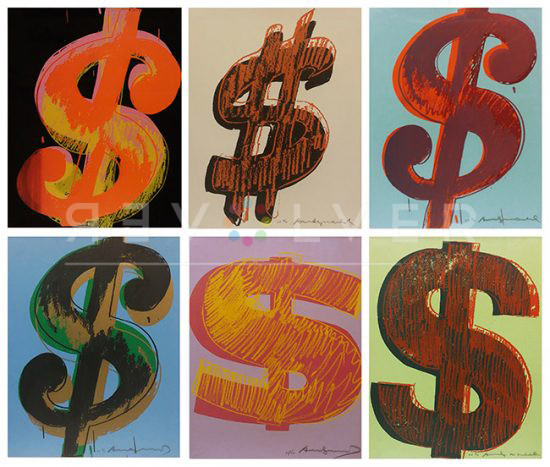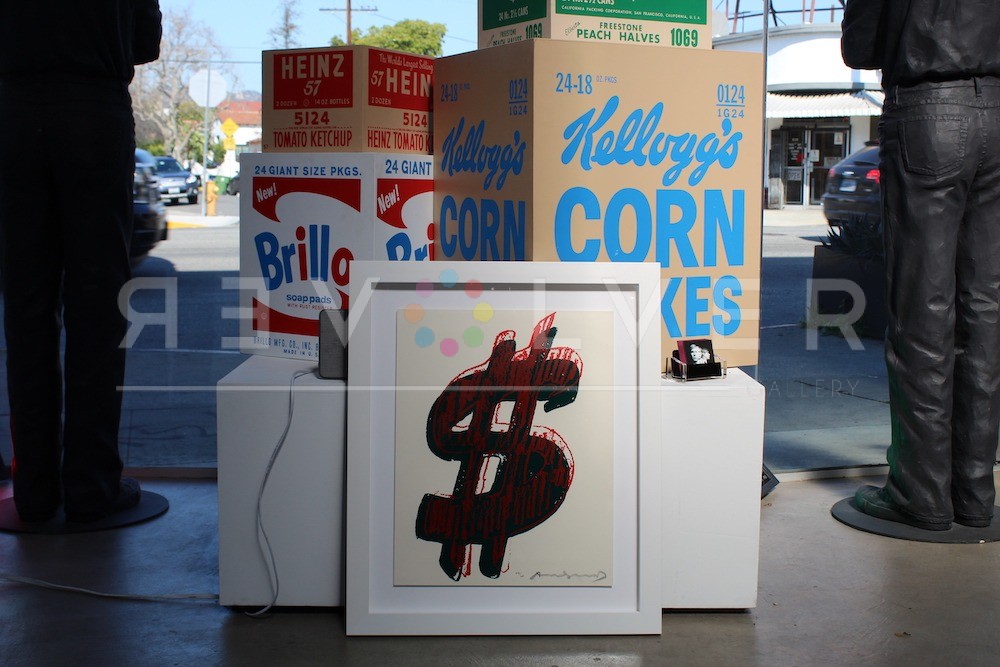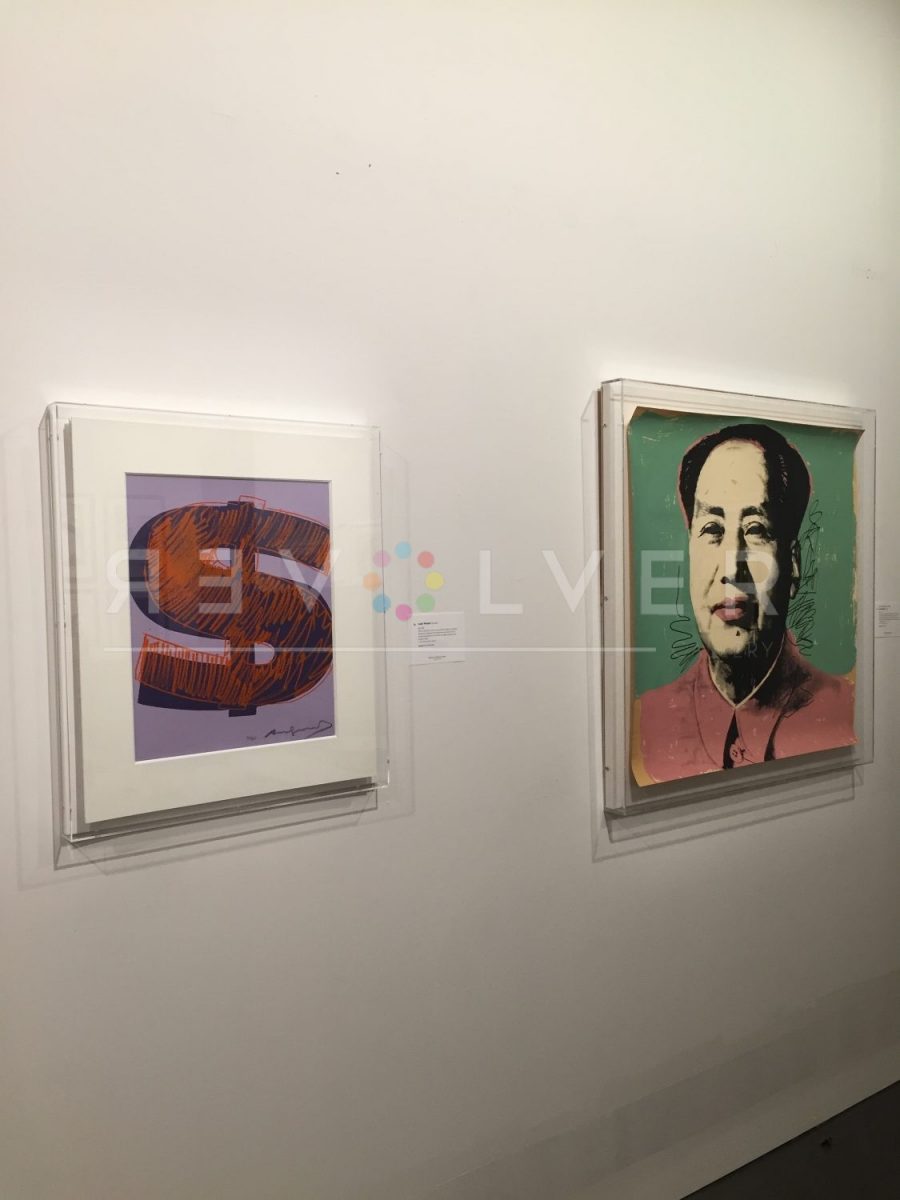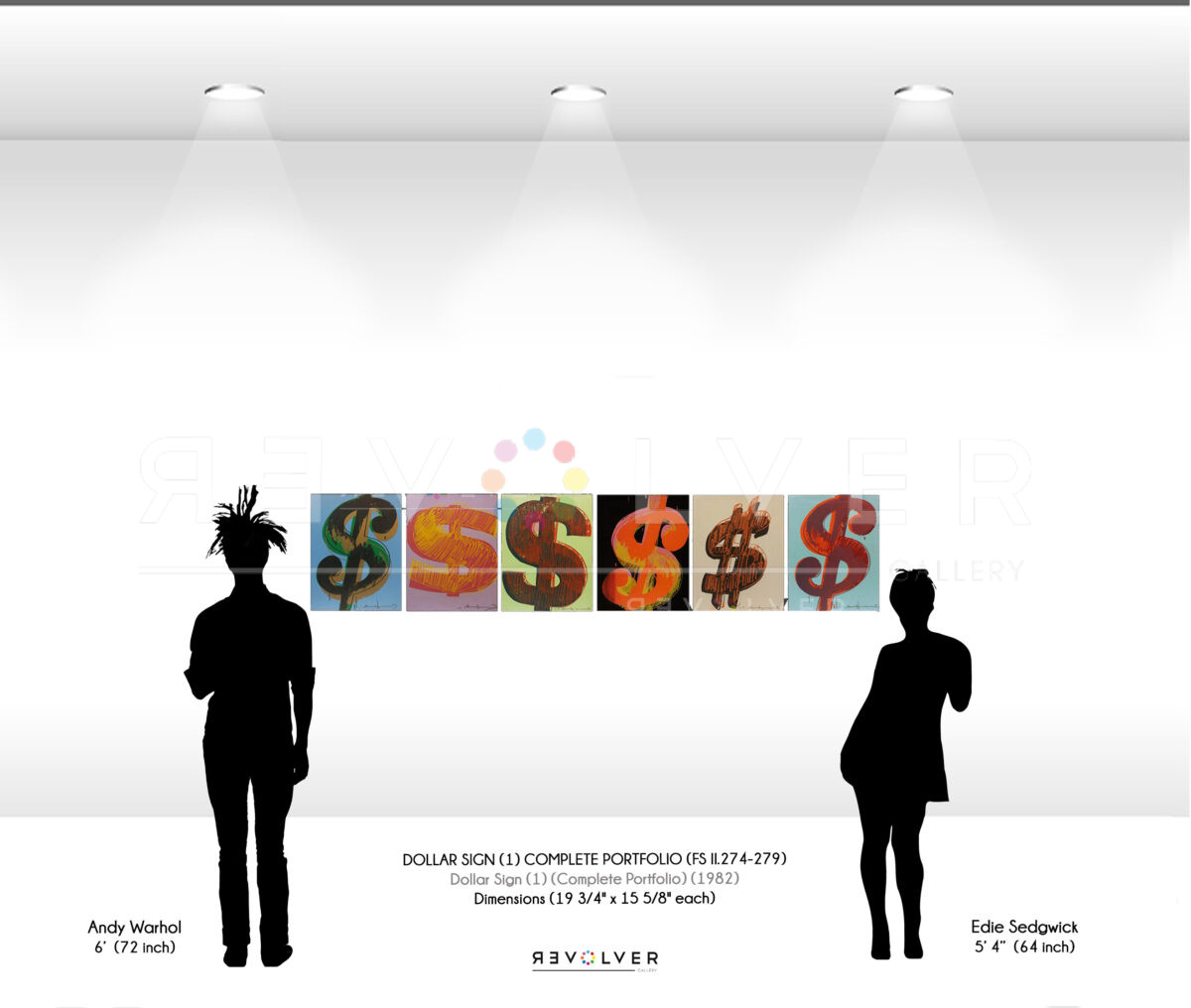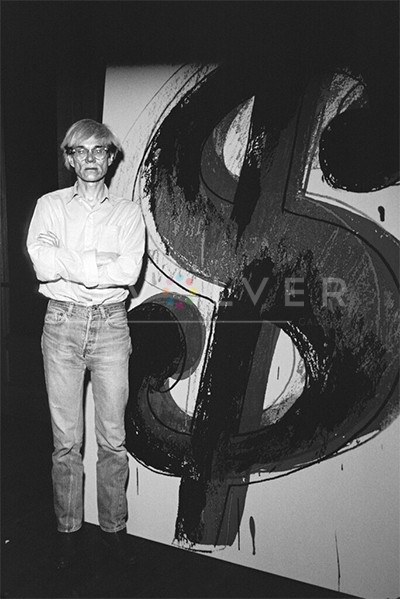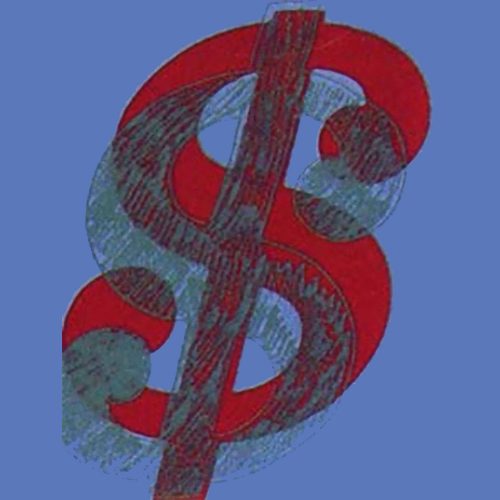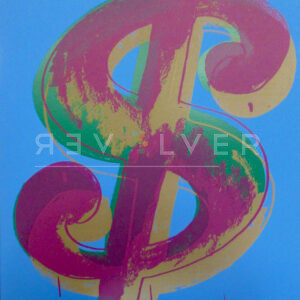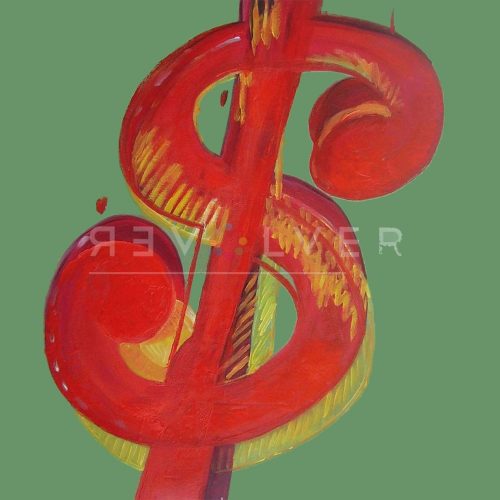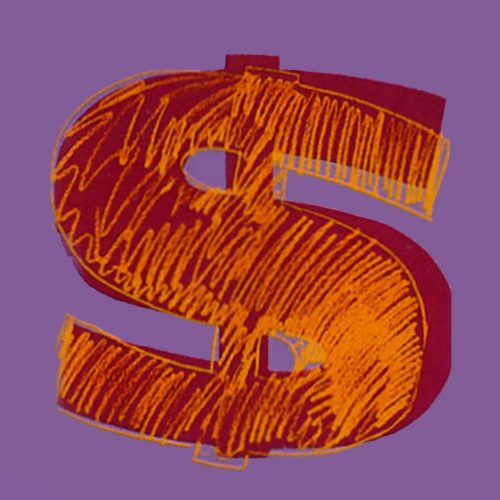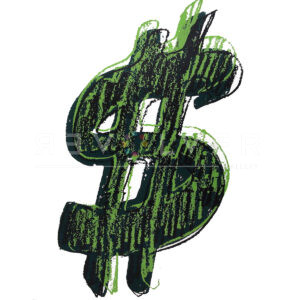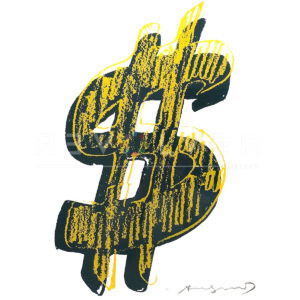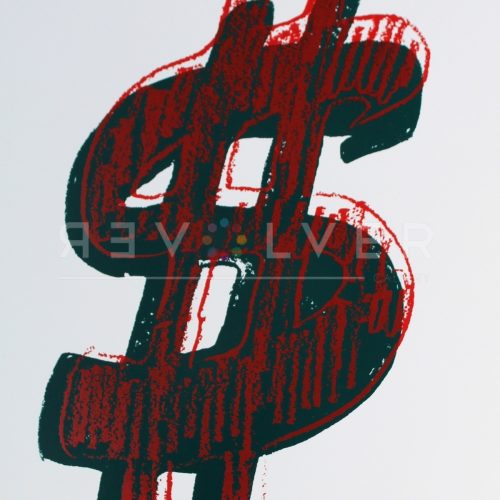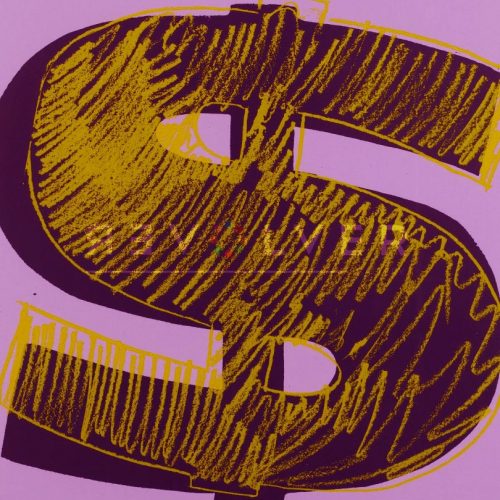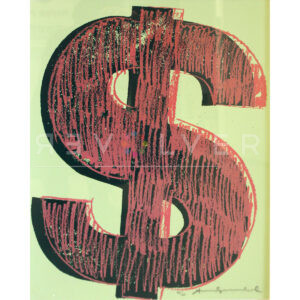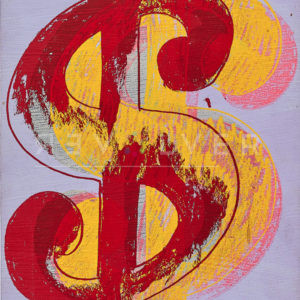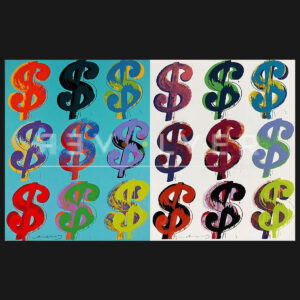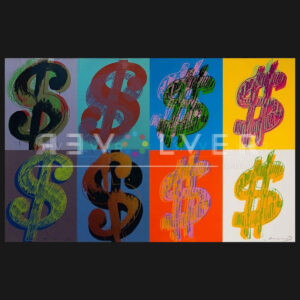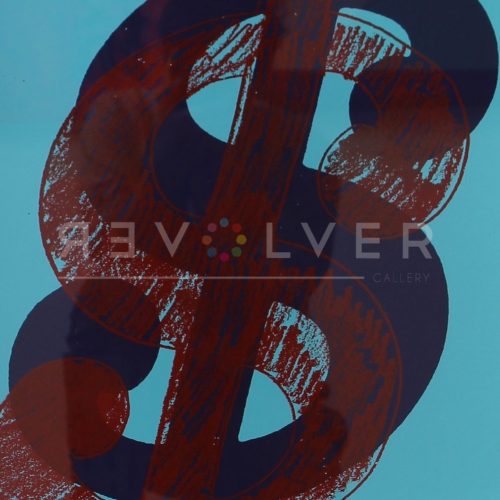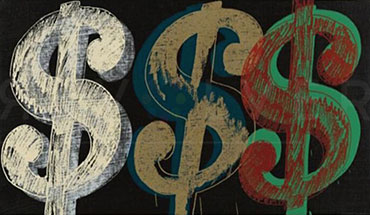Andy Warhol‘s 1982 Dollar Sign (1) complete portfolio is one of the artist’s most famous series. Warhol’s interest in wealth and money is evident in his literal emphasis on currency and the value that society puts on a simple symbol. This portfolio explores variations of the ubiquitous character, using different methods of composition in order to play with the very idea of a dollar sign itself. Each print in the portfolio showcases the subject with something slightly untraditional about it, whether it is through bold colors or abstract shading and curvature.
The Dollar Sign portfolio is the ultimate manifestation of Andy Warhol’s love affair with money. Warhol once said, “I like money on the wall,” and the Dollar Sign complete portfolio was his way of using his iconic imagery to achieve just that. These prints contain a source image that was created by Warhol himself, which was an uncommon practice for him, setting this series apart from the rest of his body of work. The Dollar Sign series is one of the most recognizable examples of the artist seizing an internationally recognizable symbol and altering it into something that was purely Warholian. The Dollar Sign (1) complete portfolio includes FS II.274-279.
Dollar Sign (1) as Part of Andy Warhol’s Larger Body of Work
The Dollar Sign portfolio represents an extreme of Warhol’s artistic philosophy. As a self proclaimed business artist, money is a motif expressed all throughout his works, often hiding under the surface. In Dollar Sign, however, this motif reaches its climax, as Warhol paints the very symbol which gives his subject matter its meaning. As one of Warhol’s most direct series, he smashes the thin boundary between art and commodity, depicting what can only be the commodified extreme of Pop Art itself. It is Warhol at his most ironic, and his most naked artistic self. The Dollar Sign complete portfolio includes FS II.274-286 with variations of $ (1), $ (4), $ (Quadrant), and $ (9).
Photo credit: Andy Warhol with Dollar Sign painting, New York, 1982. Image: © Santi Visalli, Artwork: © 2022 The Andy Warhol Foundation for the Visual Arts, Inc. / Licensed by DACS, London

